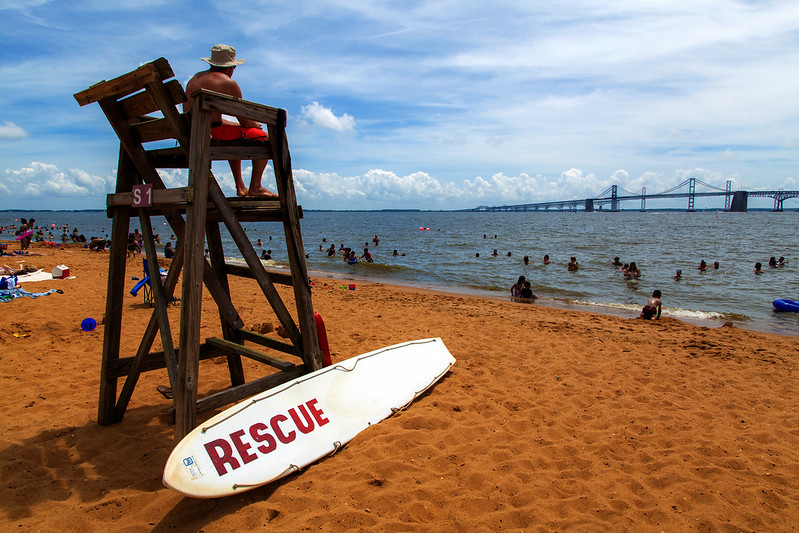Stay Safe on the Water: What to Know Before You Go
 Whether jet skiing across the Bay or surfing the waves of the Atlantic, there is no better relief from a hot Maryland day than a cool, refreshing dip in the water. With Memorial Day weekend and the start of summer right around the corner, the Maryland Department of Natural Resources reminds swimmers, boaters, anglers — everyone headed out on the water — to develop a precautionary safety and rescue plan and know the following tips before heading out.
Whether jet skiing across the Bay or surfing the waves of the Atlantic, there is no better relief from a hot Maryland day than a cool, refreshing dip in the water. With Memorial Day weekend and the start of summer right around the corner, the Maryland Department of Natural Resources reminds swimmers, boaters, anglers — everyone headed out on the water — to develop a precautionary safety and rescue plan and know the following tips before heading out.
DNR offers the following tips:
- Pay special attention to children and inexperienced swimmers. Insist they wear a well-fitting Coast Guard-approved life jacket in and the around water
- Obey lifeguards and warning signs that alert swimmers to dangers. Be aware of any surrounding signs or markers that indicate current water conditions
- Never swim alone or while impaired. The sun, wind and water can take their toll. Alcohol magnifies this fatigue and impairs judgment.
- Carry a cell phone to contact emergency personnel if a situation arises. Let someone on land know where you are going and when you expect to return.
- Stay alert and check local weather conditions. Storms come up suddenly. Wait at least 30 minutes before resuming activities after the last clap of thunder or flash of lightning.
- If you get caught in a rip current, stay calm and don’t fight it. Swim parallel to the shore until you are out of the current. Once you are free, turn and swim toward shore. If you can’t swim to the shore, float or tread water until you are free of the rip current and then head toward shore.
If an emergency occurs, immediately call 911 and remember to Reach, Throw, Row and Go:
REACH the person in trouble by extending a releasable item, such as a pole, line or rope to pull them to safety, but not by hand as the rescuer could quickly become another victim.
THROW an object that floats to the victim if they are unreachable. A life ring, life jacket, cooler or plastic jug are suitable floating objects that can keep a troubled swimmer afloat until help arrives.
ROW to the victim, using a canoe or any other safe watercraft. The rescuer must wear a life jacket. Once the victim is nearby, a rope or paddle should be extended and used to tow the victim to shore if possible.
GO to the victim by entering the water as a last resort and ONLY if properly trained. The rescuer should bring an object to keep the victim afloat and to prevent being pulled under.
For more on water safety and to view water quality reports on locations across Maryland, click here.
Check out the Natural Resources Police’s boating safety tips and reminders here.

 1-888-373-7888
1-888-373-7888 233733
233733